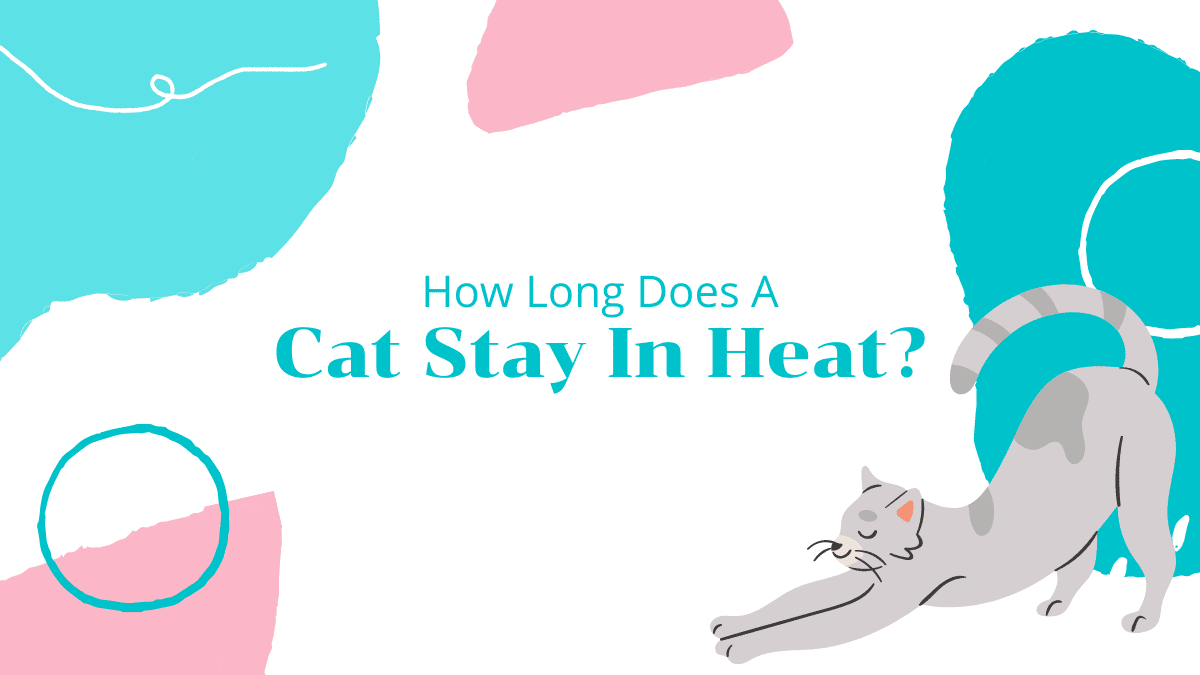How Long Does a Cat Stay In Heat?
Having your queen go into heat can be a very exciting time! This means that there are babies on the horizons! This heat cycle, also known as an “estrus cycle”, is the only time that your queen will be able to become pregnant. That’s why it’s important for you to know what to look for and what to expect from your intact queen, in order to plan a successful pregnancy.
Let’s start with..
When can your queen get her first heat cycle?
The answer is this can vary heavily based on your cat. Some queens go into heat as young as 5 months, while others don’t go into heat for as long as 18 months. The average age you can expect your queen to have her first estrous cycle is 6-9 months.
Keep in mind that while this means your queen has become sexually mature, you should not mate your queen until she is at least 10 months of age, as their bodies are not ready to carry and deliver kittens until then.
How long does a queen stay in heat?
In order to better understand your queen, and when would be a good time to place her with your stud, you need to know how long she will stay in heat. The first thing to note is the several stages of the heat cycle.
Phases of Heat Cycles in Cats
A cat goes through five phases during a heat cycle:
- Proestrus: Lasts a day or two, you will not notice any change in behavior during this phase.
- Estrus or “heat”: This phase lasts an average of seven days, but can range anywhere from 2-19 days. This is when you will see behavioral changes in your cat. This is the only stage where your cat will be receptive to male cats and can become pregnant.

- Interestrus: This phase occurs if a cat has not ovulated. Ovulation only occurs if the queen is mated with a stud. It can last between 13 and 18 days, then proestrus will start again.
- Diestrus: This phase occurs when a cat has ovulated (when she has been mated)
- Anestrus: This is when your queen does not have any heat cycle. It can happen as a result of fewer daylight hours, typically during the winter.
You can expect your queen to visibly show you signs of being in heat for an average of six days.
How long does a cat stay in heat after mating?
If your queen is mated during her estrus cycle, the signs of heat will usually subside within 24-48 hours.
What are the signs of a queen being in heat?

This is obviously different for every cat, as they all have their unique characteristics, this includes the way they show the boys they’re ready. Some queens can have heat cycles that go completed unnoticed, these are known as “silent” heats. You may only notice one thing that might be a little off from her usual behavior. Knowing the personality of your queen may be able to help you pick up on her heats, should she be silent.
However, if you are not faced with a silent heater, the queen will surely let you know she is ready to mate.
Keep an eye out for these signs:
- Loud meowing, howling, or “yodeling”
- Increased affection, rolling around, rubbing against you or objects more than usual
- Peeing
- Trying to get outside
- Tip toeing, or wiggling her hips back and forth when you pat the base of her tail
- Laying her tail to the side
How long does a cat stay in heat after spaying?
Once a cat is spayed, she should no longer go into heat. In rare cases, some of the ovarian tissue could be left behind, causing your spayed female to go into heat. If this does occur, she will most likely need to go back into surgery to have the leftover tissue removed.
Most vets recommend waiting until your cat is not in heat to spay them. When they go into heat, the blood vessels around the reproductive organs become enlarged, and the tissue could be more prone to tearing. Though the risk to the cat is not increased because of this, it makes the surgery more intensive and complicated for the vet and it may take them longer or require the use of extra supplies. This could, in turn, cost you more money to spay your queen.
Now that your female is spayed, her behavior may still be affected by the residual hormones, which will take about 6 weeks to leave her body.
You’re now educated on the signs of heat, what to expect, and the cycle of your queen. Deciding exactly when to mate your queen will be a decision you will definitely be faced with. Both for the first time, and after she’s had her first litter. It is a decision that requires many factors to be taken into account. Give this podcast episode a listen. This episode will dive into some scenarios that can help you decide when is the best time to mate your queen, and weighs some pros and cons.
Queens in heat have a tendency to want to stray! Be sure your cats are microchipped and registered.









It happens that cats ovulate without conceiving, it seems 60% of cases in cats colonies (but there was no literature reference to the information).
It happened also to my queen, she was in heat, mated but did not conceive.
Can you comment? Is this dangerous, can this cause ovaric cysts?